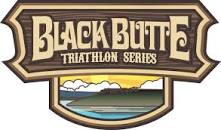A place to have fun, learn
and explore your talents.
30
Wed
How to Swim Faster
Originally posted on Active.com
By Marty Gaal
I have this talk every few months with athletes new to swimming. They ask: "How do I get faster?" I usually give them a generic answer—and then a specific one.
The generic answer is: dedication, persistence and consistency. That goes well on a poster board for a motivational speech, but hardly gives you a plan of action. People want specifics!
The specific answer is: technique, training time (volume) and workout structure (intensity). You can view these as a triangle. Technique goes at the top because without at least a moderate amount of good swimming technique, training time and workout structure will only help a bit.
To illustrate, imagine someone who barely understands front crawl or freestyle. He can swim every day (high volume) with detailed workouts with varying effort intervals (good structure). This will improve his overall cardiovascular fitness and muscular strength. But this swimmer will quickly hit a limit on improvements to speed because of poor technique. In swimming, it is very easy to use a lot of energy and make very little forward progress.
I am sure some of you reading this have already figured that out.
Swimming Technique
Without at least decent swimming technique, you will always be limited in your ability to go fast for longer distances. This is an absolute. By decent technique, I mean that more of your energy is directed to moving you forward rather then pushing you backward, to the side, underwater, etc. Teaching yourself reasonably proficient and better technique is difficult but not impossible, especially with the advent of free movie websites like YouTube (search swimming technique), as well as more thorough instructional videos.
However, I strongly recommend finding a local swimming technique coach who can film you and then provide specific recommendations on what you need to improve. Your local masters group also may have a good coach on deck who is willing to spend a few minutes during practice giving you personal feedback.
The details of swimming technique are complex and beyond the scope of this article, but the two fundamentals are: a good forward reach or extension phase and a powerful, technically correct catch and pull phase. Without these two fundamentals driving your stroke, you will need a great kick to be fast. And kicking uses a lot of leg energy, which is not good for triathlon racing.
Volume
Don't be scared, I am not going to suggest you start swimming twice a day, five days a week. Not unless you're planning to swim in college, that is. For triathlons, and to see improvement in most working adult age-group triathletes, three times a week is what it really takes. Four or five swim sessions per week are even better if you are serious about becoming a faster swimmer. But I am aware that time is at a premium, so you should follow a plan that is realistic.
28
Mon
Tri 101 Thanks!
Thank you everyone who came to Saturday's Tri 101. We had a great turnout and excellent discourse. Special thanks to Susan Marshall, Sean Molina, and Dr. Gloria Petruzzelli for presenting triathlon basics, training fundamentals, and introducing mental skills. Thank you also to Jo Gilchrist for hosting. If you missed it, you can download a copy of Gloria's mental skills training presentation on the Training page.


















